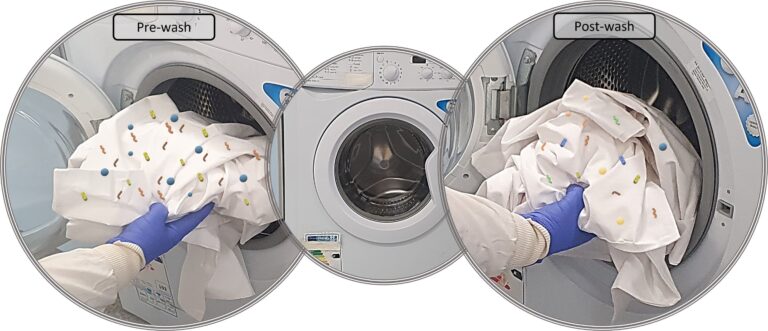Measles Update — United States, January 1–April 17, 2025 – Centers for Disease Control and Prevention | CDC (.gov)
2025-04-24T17:02:37Z
Discussion
A total of 800 measles cases and 10 outbreaks were reported in the United States during the first 16 weeks of 2025, representing approximately a 180% increase over the 285 measles cases reported in the United States during all of 2024. Most cases have been associated with an ongoing outbreak in close-knit communities with low vaccination coverage in New Mexico, Oklahoma, and Texas.
Overall, 11% of measles patients have been hospitalized, and three deaths have been reported. Similar to previous years (1), nearly all (96%) cases occurred in persons who were unvaccinated or whose vaccination status was unknown, and 77% of cases occurred in persons who were unvaccinated when excluding cases reported by Texas. Most (92%) imported cases occurred among U.S. residents returning to the United States while infectious and from all six World Health Organization regions. Adherence to standard measles control measures, including isolation and quarantine, as well as high vaccination coverage locally, prevented secondary transmission from most of these persons who were infectious after returning from travel abroad.
Most cases reported during 2025 have been associated with an ongoing outbreak in close-knit communities in New Mexico, Oklahoma, and Texas, resulting in the second largest outbreak in the United States since elimination was declared in 2000. During 2001–2023, approximately 90% of U.S. measles outbreaks with 50 or more cases occurred in close-knit communities with low vaccination coverage (8). Such communities might have frequent communal gatherings and have concerns about engaging with public health and health care systems for testing, treatment, and vaccination. The United States, Canada,††† and Mexico are all experiencing large, expanding outbreaks in similar interconnected communities. Frequent travel among similar communities across multiple states and countries might facilitate the rapid spread of measles outbreaks. The risk for widespread measles transmission in the United States remains low because of high population immunity resulting from high measles vaccination coverage. However, recent increasing global measles incidence in areas frequently visited by U.S. travelers, coupled with declines in MMR vaccination coverage in many U.S. jurisdictions to <95% (the estimated population-level immunity necessary to prevent measles outbreaks), and spread of measles from ongoing domestic outbreaks to other jurisdictions, have increased the risk for ongoing measles transmission within the United States (8,9). Limitations The findings in this report are subject to at least four limitations. First, imported cases were likely underreported because 30% of reported outbreaks had no known source. Second, outbreak-related cases were likely underreported because certain persons in affected communities might not engage with the health care and public health systems. Third, distinguishing unvaccinated patients from patients with unknown measles vaccination status in Texas was not possible; the Texas Immunization Registry legally requires explicit consent, or opt-in, for adults and by parent or guardian for children to enroll.§§§ Persons with no records available are considered to have an unverified vaccination history. Finally, definitive linkages between the large outbreak in New Mexico, Oklahoma, and Texas and cases reported in Kansas could not be identified. Implications for Public Health Practice To protect against measles and its complications before traveling internationally, all persons aged ≥12 months should have documented receipt of 2 appropriately spaced doses of MMR vaccine, and infants aged 6–11 months of age should receive 1 dose of MMR vaccine (10). Persons residing in or traveling domestically to outbreak areas should follow local public health guidance, which is developed based on review and analysis of the local outbreak epidemiology (6). Infants aged <6 months are at high risk for measles complications but are too young to be vaccinated, and therefore depend upon population immunity and passively transferred maternal measles antibodies (from previously vaccinated or infected mothers) to prevent infections and related complications. Health care providers continue to serve on the front lines to identify measles cases, alert public health departments¶¶¶, ensure recommended testing, and implement measles isolation precautions to prevent health care–associated and community-based transmission. Health care providers should consider measles in the differential diagnosis for all patients (especially those who are unvaccinated) who 1) have fever (temperature ≥101°F [≥38.3°C]) and a generalized maculopapular rash with cough, coryza, or conjunctivitis, 2) have recently traveled outside the country or to a U.S. region with a known measles outbreak, or 3) have other known or suspected exposure to measles (6). Although no specific Food and Drug Administration–approved antiviral therapy for measles exists, rapid access to supportive care can help relieve symptoms and treat complications such as pneumonia and secondary bacterial and viral infections. Providers should also offer and encourage vaccination for eligible patients who lack presumptive evidence of immunity to measles (4). Public health departments might benefit from using a CDC checklist**** to help guide their readiness activities such as preparing for laboratory testing and data reporting needs, conducting tabletop exercises, and facilitating early engagement with communities with low vaccination coverage and their trusted messengers before measles and other vaccine-preventable disease outbreaks occur. To identify communities at risk, public health departments should consider using both MMR vaccination coverage data from immunization information systems and kindergarten entry and vaccination exemption data from kindergarten entry records. Standard measles control interventions, including vaccination, isolation, quarantine, and postexposure prophylaxis (i.e., administration of MMR vaccine within 72 hours of exposure or immunoglobulin within 6 days of exposure for certain persons) (10), might be challenging to implement in certain communities. Therefore, public health departments should consider partnering with trusted community messengers (e.g., clinicians and religious leaders) on culturally competent community engagement, education, vaccination efforts, and potentially acceptable community infection control approaches. Coordination with health care facilities, early childhood education facilities and schools, and other congregate settings that surround or serve these communities to prepare for measles cases regarding appropriate infection prevention and control, testing, public health follow-up, and early childhood education or school exclusion policies is crucial to limit transmission. Increasing national and local MMR vaccination coverage is essential to preventing measles cases and outbreaks.
Auto-posted from news source






